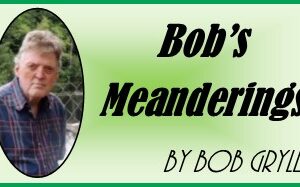I read a riveting account about a group of a dozen children, resettled as refugees from the Middle East and Africa, who were presenting in a recreation centre. As they leapt and twirled around, a team of neuroscientists intensely observed their every move and reaction.
The kids were waving streamers while they moved. Each streamer had a negative thought or memory that each had written onto their own streamer. Then on cue and in unison, the children released the streamers and sat down. Next, they gathered the fallen streamers with their problems written on them, threw them in a trash can and waved goodbye. This captivating scene was powerfully symbolic.
The children were participating in a dance therapy activity as part of the Wayne State University (Detroit area) research program exploring body-based approaches to mental health treatment in people resettled as refugees.
The Stress, Trauma and Anxiety Research Clinic began piloting movement therapies to help address trauma in refugee families. This dance movement was expressive as well. It demonstrated and offered a means toward healing and lifelong strategies for managing stress.
Every year about 60,000 children resettle as refugees in Western countries. Now, the refugee crisis resulting from the U.S. withdrawal from Afghanistan is bringing renewed attention to evacuee needs to adapt. Dance therapy for relieving of stress could be a good option.
The impulse to move the body expressively is as old as humanity. But movement-based strategies such as dance therapy have only recently had little attention in mental health treatment circles.
Dance and movement therapy not only holds promise for treatment of trauma, anxiety and depression but can also contribute to lifelong coping skills.
During the COVID-19 pandemic, the incidence of anxiety and depression doubled in youths as well as adults. As a result many people are searching for new ways to cope with and handle emotional turmoil. “Twirl for happiness.” Does dance therapy hold promise for these complicated times?
On top of the pandemic, conflicts around the world, including climate change and natural disasters, have contributed to mental health difficulties even in our own region. Should we consider dance therapy as assisting in coping?
Physical and creativity factors at a time when children and people of all ages are more inactive, can be beneficial during the pandemic and beyond. Creative arts and movement-based interventions may be well-suited to address both the physical aspects of mental illness, such as pain and fatigue.
“Why dance movement therapy?” Body movement itself is known to have a multitude of benefits – including reducing perceived stress, lowering inflammation in the body and even promoting brain health.
We also know that stress and trauma live in the body. So it makes sense that through guided practices, the movement of persons can release emotions and help out in moving forward.
Dance and movement therapy sessions place an emphasis on fostering creativity and adaptability in order to help people develop greater cognitive flexibility, self-regulation and self-direction. Research also shows that early-life experiences and how children learn to get by with them can have a lasting impact on their health into adulthood.
According to children’s mental health reports, 80% of children with anxiety disorders are not receiving the treatment they require. Dance and movement therapy and other group behavioral health programs can instill coping skills and relaxation techniques that, once learned, can last a lifetime.
Much, like yoga and meditation, dance and movement therapy focus on deep breathing through the diaphragm. This intentional breathing movement physically pushes on and activates the 10th cranial nerve.
Two dozen clinical research studies have demonstrated dance and movement therapy to be a suitable method for children, adults and elderly patients experiencing a wide range of symptoms. And for healthy individuals this dance and movement therapy was most effective for lowering the seriousness of anxiety. It has also shown promise in reducing symptoms of post-traumatic stress disorder.
Recollection of how it began: children releasing their streamers, their negative emotions and memories written onto them, waving goodbye to their problems and looking ahead to a new day. Could the ”dance and movement” concepts fit into Whitewater Region communities as a refreshing acceptable means for alleviating our stress during this Covid-19 period? I would think so.





![Kenopic/Smith Auction [Paid Ad]](https://whitewaternews.ca/wp-content/uploads/2018/10/advertising-100x75.jpeg)

